Physical activity is essential for building bone and maintaining bone health. Bone requires physical activity to stay in shape. Mechanical strain on the bone provided by activity helps to maintain bone. Spend More Time on Your Feet Physical activity is just not about the time you are walking or going to the gym but also… Read more
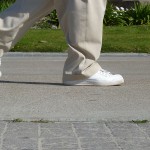
Actonel
Actonel® is one of the FDA-approved medicines for treatment of osteoporosis. The brand Actonel is a product of Warner Chilcott and its generic name is risedronate. Actonel is in the class of medicines called bisphosphonates. It works by decreasing bone turnover. Therefore, the breakdown of bone is slowed down and results in an increase of bone mineral density. Tablet Requires… Read more
Age
Age is a major risk factor for osteoporosis in women as well as men. Over the age of 50, an estimated 1 in 2 Caucasian women and 1 in 4 Caucasian men will break a bone due to osteoporosis. Other racial and ethnic groups also have increased risk with advancing age. Women In women, wrist… Read more
Alendronate
Alendronate is the most common medicine prescribed for the treatment of osteoporosis in the United States. Alendronate is a generic medicine manufactured by multiple companies. The brand name Fosamax from Merck provides all the research evidence for effectiveness for alendronate in reducing spine, hip, and nonspine fractures. The patent for Fosamax expired in 2008. Alendronate is in… Read more
Atelvia
Atelvia® is risedronate, which is the same medicine as Actonel. However, Atelvia is an extended-release tablet that is taken immediately after breakfast once weekly. Tablet Requires Special Dosing Instructions The dosing instructions for Atelvia are: Take one tablet immediately following breakfast with at least 4 ounces of plain water once weekly. Remain upright sitting or… Read more
Atypical Femur Fractures
Atypical femur fractures have received increased research and clinician focus over the past several years. The cause of these fractures and who is at risk for these fractures is still not known. Although atypical femur fractures have been described prior to the use of bisphosphonates, femur fractures that are classified with atypical features are occurring… Read more
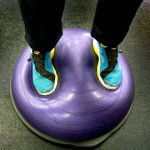
Balance
Maintaining balance and core strength is key to decreasing your risk of breaking a bone no matter what age you are. Regardless of your bone density, if you don’t fall you will be unlikely to break your wrist, shoulder, or hip. Over 90% of hip fractures are a result of a fall. Even though you… Read more
Binosto
Binosto® is another formulation of alendronate: an effervescent tablet that is dissolved in water. Think Alka-Seltzer. Drop Binosto in room temperature water, it fizzes up and is in solution ready to drink after a quick stir. Since the solution is “buffered,” it is supposed to be less likely than alendronate in the tablet form to… Read more
Bisphosphonates
Bisphosphonates are a class of medicines used to treat various medical problems. In addition to osteoporosis, some bisphosphonates are approved for the treatment of another bone disorder called Paget’s Disease, others are used in an intravenous formulation to treat high blood calcium, and in patients with cancer in conjunction with chemotherapy. The name is based… Read more
Bone
Bone is a composite material that consists of mineral and protein. The crystals of mineral are calcium and phosphate that are called hydroxyapatite. The mineral is bound to protein, which is primarily collagen. This composition provides both strength and resilience. If bone was made only of mineral, it would be more brittle and break easily.… Read more
Bone Breakdown
Tests for bone breakdown, which are markers of osteoclast activity, measures various breakdown products of bone collagen. These are the most common tests: C-telopeptide (CTX) deoxypyridinoline (DPD) N- telopeptide (NTX)
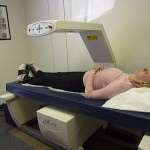
Bone Density Scan
A bone density scan measures the quantity of bone. The most common way to measure bone density is with a dual-energy x-ray absorptiometry called DXA for short. The most common sites of measurement are the hip and lumbar area of the spine. In some instances, the forearm is also measured. Your measurements are compared to… Read more
Bone Formation
Bone formation markers are an indicator of osteoblast activity. All tests are measured from a blood sample. Common tests include: bone alkaline phosphatase (BSAP) osteocalcin procollagen type 1 propeptides (P1NP)
Bone Mineral Density – BMD
Bone mineral density or BMD is the mineral mass of a bone divided by its area. BMD is defined as mass of mineral per unit volume. Therefore, it reflects the degree of mineralization of bone. You will most likely see this term in association with your bone density scan or DXA data. For each bone… Read more
Bone Turnover Markers
Measurement of bone turnover is possible by measuring markers in blood or urine that provide information about activity of bone breakdown and bone formation. Bone turnover markers may be used to estimate rate of bone loss. In combination with results of a bone density scan, bone turnover markers are useful to determine risk of fracture.… Read more
Boniva
Boniva® is a prescription medicine option for treatment of osteoporosis. Boniva is in the class of medicines called bisphosphonates that also includes Actonel, generic alendronate, Atelvia, Fosamax, and Reclast. Bisphosphonates work by decreasing the rate of bone breakdown. Generic Version Available Boniva is often referred to as the “Sally Field drug.” Since Sally Field was… Read more
Breastfeeding
Breastfeeding creates a tremendous calcium demand. In contrast to pregnancy, the skeleton is the main source of calcium. Therefore, a loss of bone occurs but is transient. Bone density is usually restored within six months after weaning your baby. The good news is breastfeeding does not appear to be associated with increased risk of fractures… Read more
Calcitonin
Calcitonin is a natural hormone produced by the thyroid gland that contributes to calcium regulation in the bone, kidney, and intestine. Osteoporosis Medicine Calcitonin is a medicine approved for treatment of osteoporosis in postmenopausal women who are 5 years or more after menopause. Calcitonin is available by the brand names Miacalcin® and Fortical®. Miacalcin, which… Read more

Calcium
Ninety-nine percent of the body’s calcium is in the skeleton. A constant level of calcium is maintained in the blood to provide the calcium needed for critical cell functions particularly in muscles and nerves. Regulating hormones interact with bone, intestine, and kidney in order to ensure an adequate supply of calcium vital functions. Bone also… Read more
Cortical Bone
Cortical bone, also referred to as compact bone, makes up about the 80% skeleton. Cortical bone makes up the outer shell of all bones and the shafts of long bones of the arms and legs. Cortical bone is made up of dense deposits of minerals, primarily calcium and phosphate, and collagen. These are arranged in… Read more
Denosumab
Denosumab is the generic name for brand name Prolia® and Xgeva® manufactured by Amgen. No generic version is available for this medicine. Prolia is 60 mg of denosumab administered under the skin twice a year – every 6 months. Prolia is indicated for postmenopausal women or men at high risk for fracture. Also it is… Read more
Diet
What is a bone healthy diet? It’s difficult to define a diet in isolation of everything else. Other factors interact with diet and your nutritional status. Lifestyle factors, especially physical activity, alcohol consumption, and smoking influence bone health. If you have healthy habits, you most like have a healthy diet and the reverse may be… Read more
Drug Holiday
Drug holiday refers to stopping your osteoporosis medicine for a temporary time period. Essentially you are on “holiday” from taking your medicine. Specifically, this is referring to the bisphosphonate class of medicines. Expert Opinion This practice has arisen based on primarily expert opinion since there is scant clinical trials research to provide evidence in this… Read more
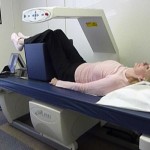
DXA
The most common bone density scan is often referred to by its abbreviation DXA or DEXA. The latter is the preferred term. Dual Energy X-ray Absorptiometry is the full name. The name is descriptive of the technique used to measure the amount of bone mineral density. Two different energy levels of x-ray beams pass through… Read more
Estrogen
Estrogen is a sex hormone that supports bone health in not only women but also in men. Estrogen is key during the growth spurt in puberty along with other hormones. For women after puberty, regular menstrual cycles are a general indicator of adequate estrogen support for the bone and other critical functions. In the menopause… Read more
Evista
Evista®(raloxifene) is an osteoporosis medicine that is called a selective estrogen receptor modulator or SERM. You may also see it referred to as an estrogen agonist antagonist (EAA). These names are descriptive of its mechanism of action. Evista acts like estrogen in some tissues and blocks the effect of estrogen in others. Evista is beneficial… Read more

Exercise
Regular exercise is essential for bone health. Mechanical strain to bone produced by exercise enhances bone building over bone breakdown activity. in the absence of physical activity, stem cells that have the potential to produce osteoblasts, the bone building cells, will make fat cells instead. The following exercise principles are a general guide for maintenance… Read more
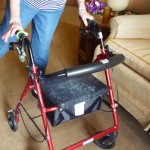
Falls
With age, the likelihood of falls increases. More than one third of adults age 65 and older in the US fall at least once each year. Injuries from falls can be devastating. More than 90% of hip fractures are caused by a fall to the side onto the hip. Falls can be deadly, too. Statistics… Read more
FDA-approved Medicines for Osteoporosis
The Food and Drug Administration (FDA) requires evaluation of osteoporosis medicines in large clinical trials that assess the effect of the study medicine on fracture reduction. The Food and Drug Administration has approved the following medicines for treatment of osteoporosis in postmenopausal women. The bisphosphonate class makes up the largest group of medicines available. These… Read more
Forteo
Forteo® (teriparatide) is a FDA-approved medicine for treatment of osteoporosis in postmenopausal women, men, and individuals treated with steroids. Forteo is the only osteoporosis medicine that targets the bone building cells, osteoblasts. This is in contrast to all the other medicines that work by lowering the rate of bone breakdown and targeting the osteoclast. How… Read more
Fosamax
Fosamax® was the first prescription medicine FDA approved for treatment of postmenopausal osteoporosis in 1995. In 2008, generic versions of Fosamax, which is alendronate became available the United States. Because of a large cost differential between brand and generic tablets, if you receive a prescription for Fosamax most likely it will be filled as generic… Read more
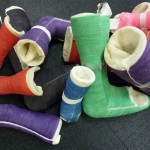
Fractures
The risk of osteoporotic fracture ultimately depends on two factors: the mechanical strength of bone and the forces applied to it. When the force of an impact exceeds the strength of bone, the bone breaks. How Many Broken Bones In the United States over 2 million fractures occur each year in adults over the age… Read more
